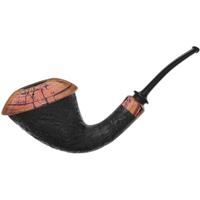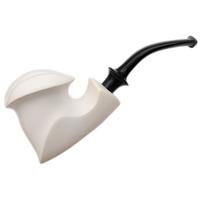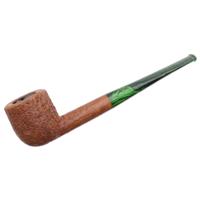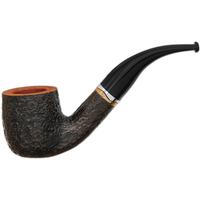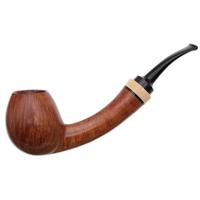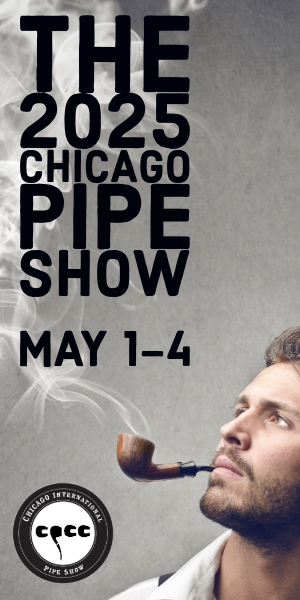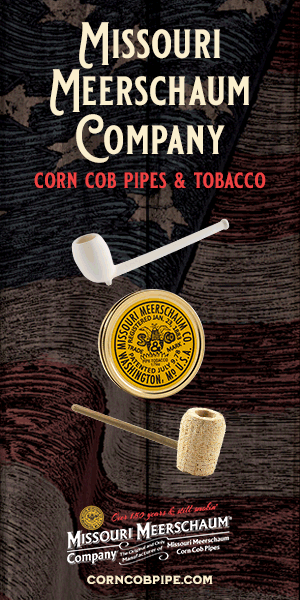Are Petersons Today's Dunhill
- Thread starter mso489
- Start date
You are using an out of date browser. It may not display this or other websites correctly.
You should upgrade or use an alternative browser.
You should upgrade or use an alternative browser.
- Status
- Not open for further replies.
I own 5 Peterson, 4 Savinelli, and 0 Dunhill pipes. Since I don't own a Dunhill I can't make a smoking or quality comparison. The only thing that is obvious to me is that both Peterson and Dunhill have stuck to the classic shapes, and Dunhills have not depreciated in price over the years. Savinelli has a little more modern styling, but their sandblasting technique might be closer to Dunhills. Peterson isn't in the running on that point.
I think that 1920-1930 Kaywoodies and Dunhills of the same era would be a closer smoking comparison. I own 8 Kaywoodies from that time period - obviously they didn't hold their value as well as the Dunhills. That little white dot is magic to some.
I think that 1920-1930 Kaywoodies and Dunhills of the same era would be a closer smoking comparison. I own 8 Kaywoodies from that time period - obviously they didn't hold their value as well as the Dunhills. That little white dot is magic to some.
Let's not forget that one of the biggest reasons Dunhills are so collectable is the ease of exact dating due to the stamping. It's much harder to know the vintage of a Pete {and most pipes) to that degree of accuracy. That doesn't account for the high initial price point, but it sure helps keep the value of estate pices up.
It is an interesting perspective. One thing Dunhill hasn't done (to my knowledge at least, which isn't all that deep) is make lower end pipes. I think the lower end Petes have degraded the reputation of the brand.
Your post did get me thinking a bit. I have probably 12 to 15 Dunhills, some recent and some patent era pipes. None are in my current rotation - I tried, but wasn't blown away. They all sit in a closet. On the other hand, I have two Peterson pipes in my current rotation - both "high end" Peterson House Pipes. I bought both at the Peterson shop in Dublin when I was there, and both are amongst my top smokers.
Not saying I won't try a Dunhill again in the future.
Your post did get me thinking a bit. I have probably 12 to 15 Dunhills, some recent and some patent era pipes. None are in my current rotation - I tried, but wasn't blown away. They all sit in a closet. On the other hand, I have two Peterson pipes in my current rotation - both "high end" Peterson House Pipes. I bought both at the Peterson shop in Dublin when I was there, and both are amongst my top smokers.
Not saying I won't try a Dunhill again in the future.
By the way, I just did the calculation. $19 USD in 1964 is the equivalent of $146.02 in today's dollars.In 1964 I bought large bent dunhill for $19 at la fonds . In the next few years I bought charlatans at $80 gbd sat $25 and bobs and other English pipes dunhill did not stand out. Then came the Danes
Maybe Dunhill prices, in real dollar terms, have risen a bit.
Lathe turning is always part of the process of turning out classical shapes. Barling pipes were all handmade, but the shaping involved lathe turning. Machine work is almost always part of the "handmade" process. It's the art of the "cut down" where the standard shape is refined by hand to mitigate the natural flaws that occur in the briar, that gets lost. In the early 1960's Dunhill started increasing its use of fraising and machine finishing and eventually closed its in-house handmaking department. They had a huge market to supply and looked for an efficient way to meet demand while keeping costs down. A machine made pipe isn't better or worse than a handmade pipe. It just doesn't have the cachet of "made by hand", and cachet is synonymous with luxury brands like Dunhill.I'm certainly no expert on Dunhills but I've always had the impression that Dunhills have been machine made (but finished by hand) from their very beginning. I'm aware that they have produced "benchmande" quaints and freehands, as they still apparently do, but I believe that the bulk of their production was, and still is, machine-fraized.
It's a comparison that often comes up in discussions. As Kaywoodie lovers (I do love me some Kaywoodies) like to point out, Kaywoodie outsold Dunhill and sometimes went for more money, pre-War. Kaywoodie did so well that they took the war to the home front, opening a factory in England to better supply their market there. But after Kaywoodie was sold, it's new owners cheapened the product and eventually turned it into a "drugstore" pipe, which is how it's now perceived and remembered. It just means that those great old Pre-War Kaywoodies can be got for very attractive prices.I think that 1920-1930 Kaywoodies and Dunhills of the same era would be a closer smoking comparison. I own 8 Kaywoodies from that time period - obviously they didn't hold their value as well as the Dunhills. That little white dot is magic to some.
Lochinvar:
Congrats! You just won the Internets!Dunhill is a decent machine made pipe selling for double its worth. Peterson is a half step above a basket pipe selling for three times it's worth.
Ditto on the Peterson House Pipes. I have a dozen of these and I smoke them all at least once each week; they are great smokers. But they are also Peterson's "top shelf" pipe, allegedly hand-made. I don't own any Dunhills so I can only speculate, but I would surmise the top-end Peterson may be the equivalent of the low-end Dunhill. Price-wise that seems to make sense; the top-end Petes are in the mid-$400s, right around where Dunhill's start.Your post did get me thinking a bit. I have probably 12 to 15 Dunhills, some recent and some patent era pipes. None are in my current rotation - I tried, but wasn't blown away. They all sit in a closet. On the other hand, I have two Peterson pipes in my current rotation - both "high end" Peterson House Pipes. I bought both at the Peterson shop in Dublin when I was there, and both are amongst my top smokers.
I think the lower end Petes have degraded the reputation of the brand.
IMO the fact that the supposedly clean high grade firsts that have been commonly found with glue and dust
Hehehehe! I knew this thread was going to go crazy  I've yet to own a Dunhill, and to be honest I don't know if I ever will on my wages. Would I like to? Yeah, I'm sure I would. I've heard pretty much only good things about them. And of course I'm sure part of it would be bragging rights lol. But I love my Petes. And they're not higher end pipes. They're both (yeah I've only got two... so far) St. Patty's Day pipes from the last two years. But they smoke well and they feel great in the hand.
I've yet to own a Dunhill, and to be honest I don't know if I ever will on my wages. Would I like to? Yeah, I'm sure I would. I've heard pretty much only good things about them. And of course I'm sure part of it would be bragging rights lol. But I love my Petes. And they're not higher end pipes. They're both (yeah I've only got two... so far) St. Patty's Day pipes from the last two years. But they smoke well and they feel great in the hand.
- Status
- Not open for further replies.



